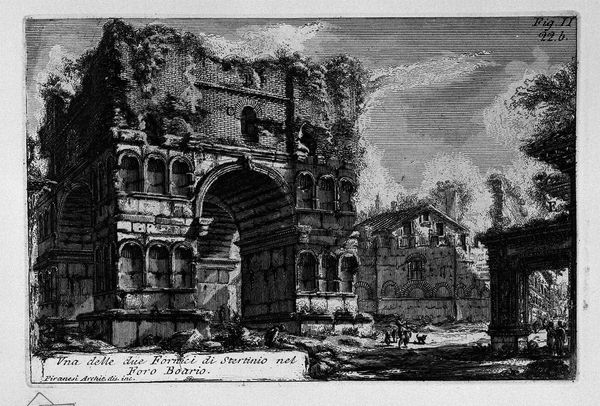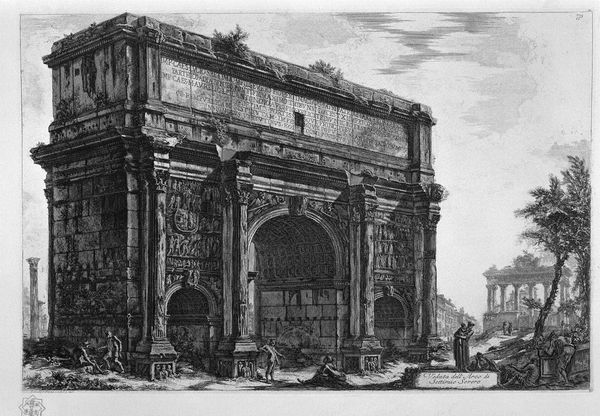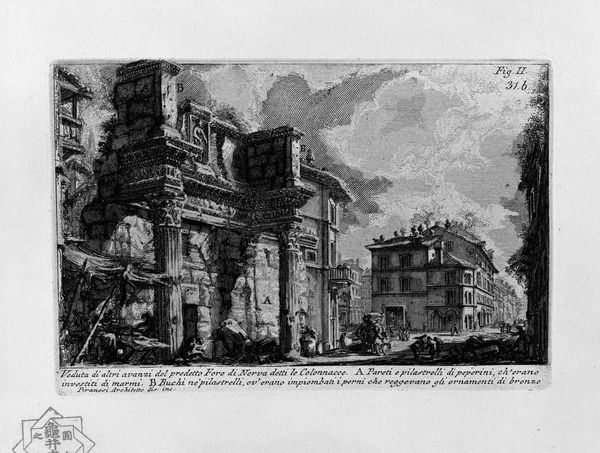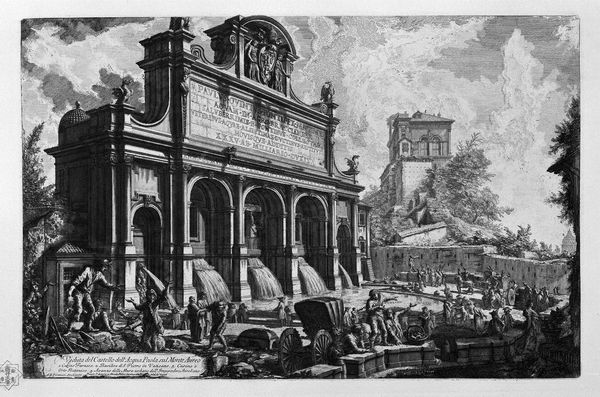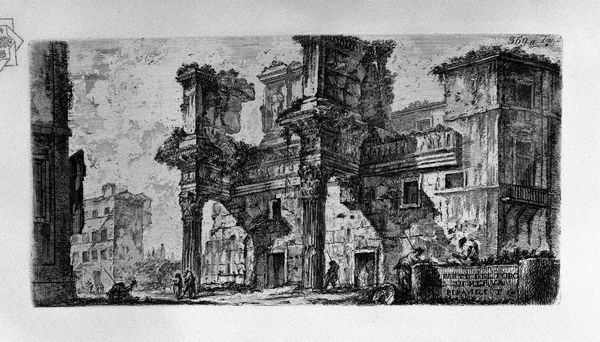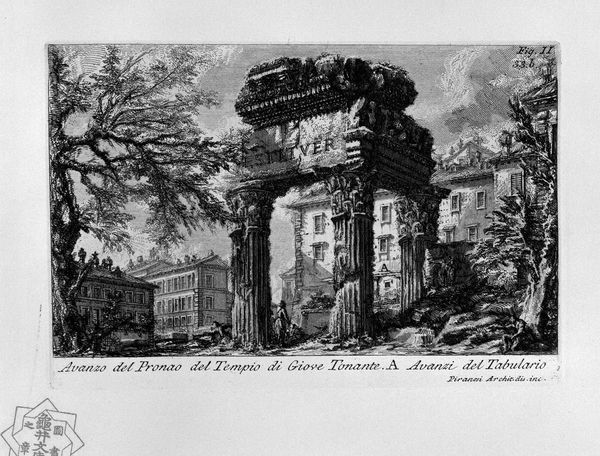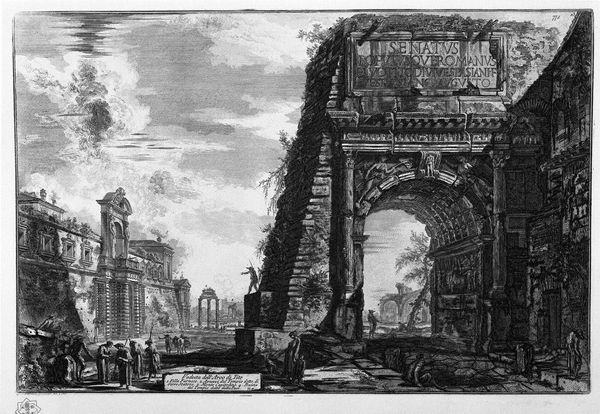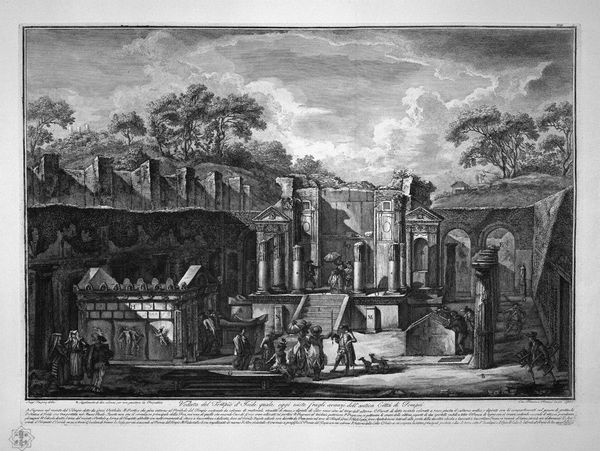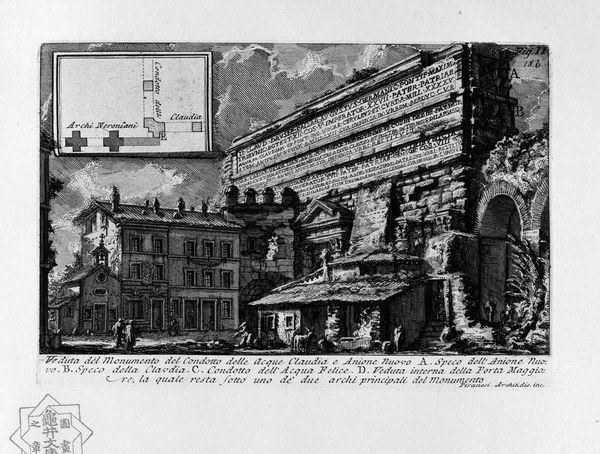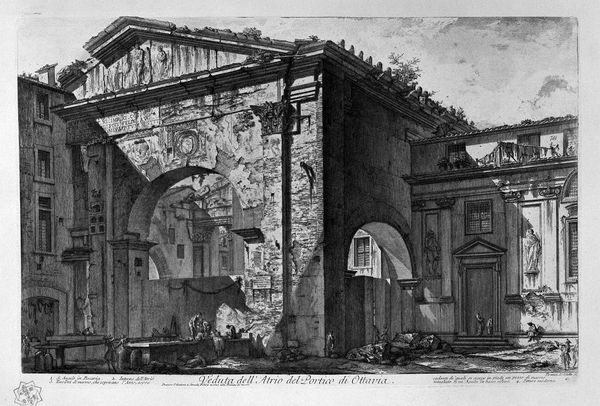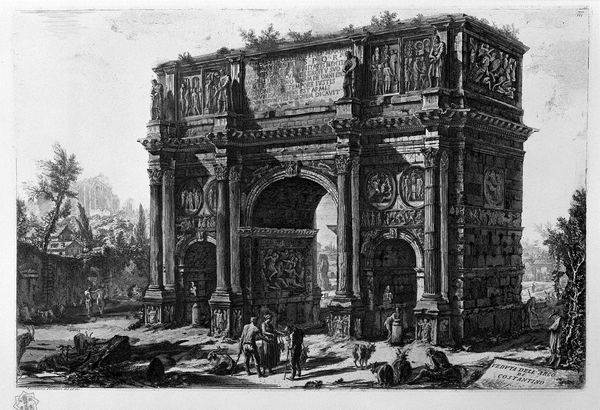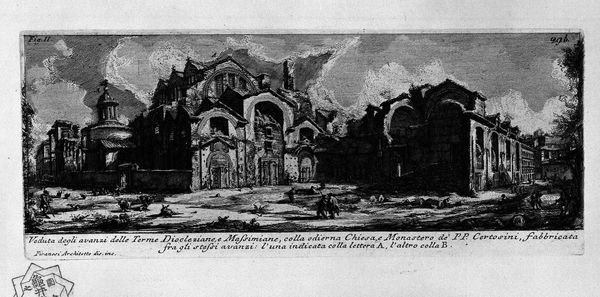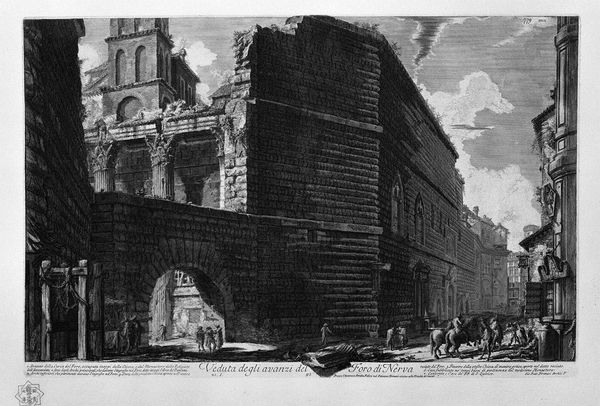
print, etching, engraving, architecture
#
neoclacissism
# print
#
etching
#
greek-and-roman-art
#
landscape
#
form
#
ancient-mediterranean
#
arch
#
line
#
cityscape
#
history-painting
#
engraving
#
architecture
Copyright: Public domain
Giovanni Battista Piranesi made this etching of The Roman Antiquities, t. 1, Plate XXXVI sometime in the mid-18th century. Piranesi's focus was the arch of Constantine and the architecture of ancient Rome. But consider how the passage of time and the state of the structures speak to the role of institutions in preserving and shaping our understanding of history. The image uses visual cues of scale and detail to create meaning. The towering arch, rendered with precise detail, contrasts with the small, almost incidental figures populating the scene. Piranesi was working in a time when the Grand Tour brought visitors to Italy, influencing the rise of Neoclassicism. This image isn't just a record; it's a romantic vision that also serves to critique contemporary architecture. It is progressive in its emphasis on the ruin as a site for the imagination. To understand Piranesi fully, we need to consider how the artistic academies shaped his style, the role of printmaking in disseminating knowledge, and the political implications of celebrating Roman antiquity. Art is never made in a vacuum; it reflects and shapes the social forces around it.
Comments
No comments
Be the first to comment and join the conversation on the ultimate creative platform.
